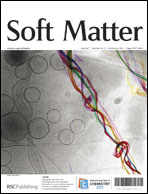The destabilization of asphaltenes adversely affects many aspects of the petroleum energy industry. Although polymeric dispersants have been shown to stabilize asphaltene colloids in non-polar media, the mechanism by which they prevent aggregation is not well-understood. We use a variety of techniques to investigate systems of colloidal asphaltenes stabilized in heptane by an effective dispersant. Phase analysis light scattering (PALS) measurements reveal an increase in the electrophoretic mobility as a function of dispersant concentration, suggesting electrostatic repulsion as the primary stabilizing force. Dynamic light scattering (DLS) measurements indicate that the increase in mobility corresponds to a decrease in particle size. A simple scaling argument suggests that the dispersant adsorbs to the surface of the asphaltene colloids. UV-visible spectroscopy and static light scattering (SLS) measurements corroborate this proposal. Interestingly, the colloidal asphaltene properties change below the critical micelle concentration (cmc) of the dispersants used. The nature of the asphaltenes themselves plays an important role in allowing for this tunability of their properties. Contrary to currently accepted views of non-polar colloidal suspensions, our results indicate that isolated dispersant molecules, not inverse micelles, can lead to charge-stabilization of asphaltene colloids.

You have access to this article
 Please wait while we load your content...
Something went wrong. Try again?
Please wait while we load your content...
Something went wrong. Try again?


 Please wait while we load your content...
Please wait while we load your content...